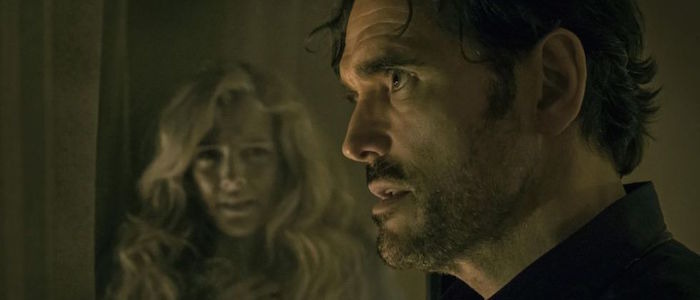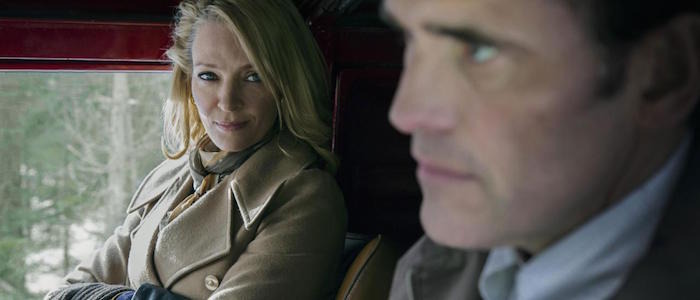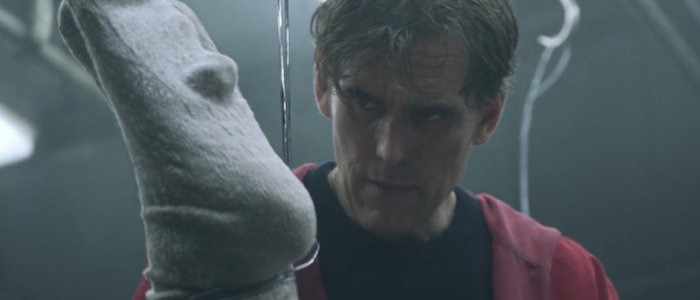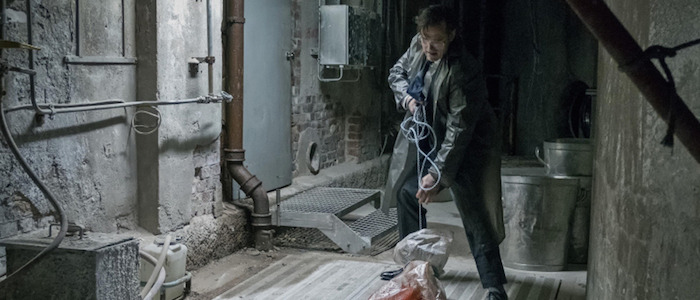'The House That Jack Built' Review: Lars Von Trier's Serial Killer Movie Is Sometimes Hilarious, Often Fascinating, And Always Full Of Sh*t [Festival Du Nouveau Cinéma]
Lars von Trier has never exactly been subtle. His characters often talk nakedly about their films' themes, serving as mouthpieces for von Trier's ruminations on various subjects. His metaphors are incredibly on the nose; this is a man who made a film about depression by having a literal planet loom overhead, ready to crush all in its way. Though his ideas are almost always interesting, his execution varies between rapturously artful and thuddingly obvious.The House That Jack Built is all of those things and more – and also von Trier's most self-indulgent movie to date.
The Art of Killing
Based on its marketing, you'll likely go into The House That Jack Built expecting a serial killer movie. In large part, that's what you get: Matt Dillon delivers a unique and committed performance as Jack, an engineer with OCD who is also a brutal and cruel serial killer. We follow Jack's career in killing from his first, opportunistic murder (Uma Thurman), through his "growth" period, up until the moment of his death. Along the way, Jack's modus operandi evolves from strangulation to shooting to more outlandish methodologies.Jack is relentless in depicting the psychopathic mind and actions of its protagonist. Through voice-over narration (in the form of a conversation between Jack and Bruno Ganz's mysterious confessor figure), it digs into Jack's psychology, touching on his childhood and exploring his own peculiar philosophies on murder. As the film progresses, Jack's initial OCD-driven fussiness gives way to more reckless, risk-taking behaviour, and Dillon's performance becomes wilder and more terrifyingly confident along with his killing.As one would expect, the film's violence is incredibly gory. Jack's victims are impaled, their heads smashed in, their kneecaps shot out, their body parts cut off, and worse, all treated with a willfully shocking level of realism. Von Trier doesn't shy away from violence against animals or children, either, deploying some highly effective editing sleight of hand to make that violence hit as hard as possible. Jack is psychologically cruel, too, playing sadistic games with many of his victims – including one that involves a long-con seduction of a mother and her two kids.Paradoxically, despite Jack's brutal violence and dark psychology, this is also probably von Trier's funniest film. Many of Jack's kills are treated almost like comedy sketches, completely aware that the audience knows what's eventually coming next. Thurman's character, picked up by Jack when her tyre pops and jack breaks (ha, ha), spends her final moments theorising about how a serial killer could exploit the situation in which she finds herself.Siobhan Fallon Hogan almost reprises her memorable role from Men In Black as another victim, in a trio of sequences that go from cringe comedy to absurdist comedy to the goriest, funniest sight gag you've ever seen. Dillon nails it all, even turning a scene of Jack practicing "normal" facial expressions in the mirror into a borderline Carreyesque gurning display. There's a really strong, jet-black comedy in here. A nice surprise!
The Killing of Art
There are two more significant layers to The House That Jack Built, and the first is strong, if not exactly original. Jack's voiceover repeatedly comes back to the notion of art: he considers himself an artist, and his victims his medium. What starts out as narration turns into a conversation with a therapist, then something else entirely, and all through it, Jack returns to his reverence of himself as an artist.That takes on a literal shape as, after his first murder, he starts storing his victims' bodies in a walk-in freezer, posing and freezing them in twisted tableaus – which he photographs with a medium-format camera. His murder projects are no more terrible (and far less elaborate) than other cinematic serial killers like Jigsaw or John Doe, but as his collection of corpses grows, forming a gruesome art gallery of sorts, you really get a sense of his obsession. And that obsession reflects back on himself.Jack is an engineer, but wants to be an architect; while he's trying to complete his murder art, he's also trying to build a house, repeatedly commencing construction before tearing it down and starting anew. His repeatedly drawn distinction between architects and engineers suggests he considers himself on a higher plane than others do. "Engineers read music," he says; "architects play music." I would've gone for "play" and "write," personally, but there we go.The central question here revolves around whether or not great art is worth the destruction wrought to create it – and whether destruction in and of itself is an art. What's Jack's place in all that? This "murder as art" metaphor has been used many times before, but rarely with this degree of investigation. For a fairly small-town engineer, Jack is incredibly well-read on art history – suspiciously so, even. Had Von Trier stopped there, he'd have made one of the best films of his career.But the fucking guy just can't help but make it all about himself.
Poor Lars Von Trier
There's a lyric in the Manic Street Preachers song "Faster" that goes, "self-disgust is self-obsession, honey," and it came to mind often while watching Jack. Von Trier's murder-to-art comparison isn't merely allegorical. It's a one-to-one representation of himself, specifically, as a tortured and maligned artist known for hurting people in the course of making his films.Von Trier tries so hard to shock, pummelling the audience with not only his own serial killer narrative but also footage of historical atrocities, that the shocking imagery becomes banal white noise. The shock is merely there to elevate the director's sense of purpose; intercutting footage of Nazi concentration camps with literal clips from his own films – underneath a monologue about "great art" – is the height of arrogance, calling to mind his Cannes ban while seemingly proclaiming himself a figure as historically significant as Adolf Hitler. Jack's monologue about how men are unfairly treated (delivered to "Simple," the only woman named in the film) inspires eye-rolls as much as it does indignation. By the time the film's epilogue has Jack barricading himself inside his artwork and wondering whether he can climb out of literal Hell, no amount of astonishing imagery (of which that epilogue has plenty) can overcome the dreariness of von Trier's ode to himself.By positioning Jack as an avatar for himself, as he so blatantly is, von Trier might think he's being self-effacing or even self-flagellatory. But the tone he strikes here is one of defensiveness, railing against the plebs who don't understand his art, his pain, his struggle. Ganz's character offers token challenges to Jack's philosophies, but von Trier paints them – and thus, his critics and audience – as small thoughts from small people, beaten down by endless monologue to which nobody can respond. The narcissism on display isn't lessened by this on-the-nose discussion; it's heightened by it.
The House That Lars Built
Do we need to consider the director in looking at a work? Shouldn't we be able to consider the work on its own merits? Whatever your opinion on the matter, Lars von Trier's mind is set. There's no way to watch The House That Jack Built without factoring its director into things – largely because the only way he could have inserted himself more into the film is by casting himself as Jack.The House That Jack Built is so very nearly a terrific, smart black comedy about death, art, and morality. But it descends so completely into self-centered masturbation (or more of a cry-wank) that the ultimate takeaway is what a dick the director is. His script makes overtures at depth, but it's all there on the surface: this is Lars von Trier, expounding upon his greatness from beneath a thin veil of self-deprecation.I don't begrudge anyone for doing some soul-searching. Therapy is a difficult and important thing to do. Transformative, even. But therapy tends to happen privately, not on cinema screens for paying audiences, and it absolutely has to be approached with genuine self-reflection. Von Trier could have told the same story, and even made the same observations, without proudly dumping his specific baggage onto the screen. But of course, he didn't.The House That Jack Built is a winking, sorry-not-sorry response to its director's critics; a petulant manifesto for his particular brand of on- and offscreen cruelty; a self-important passion play with Dillon as a transparent stand-in. Lars von Trier is a man with a megaphone standing on a mountaintop, screaming for onlookers to pity how narcissistic and flawed he is. And this is the house that he built.




